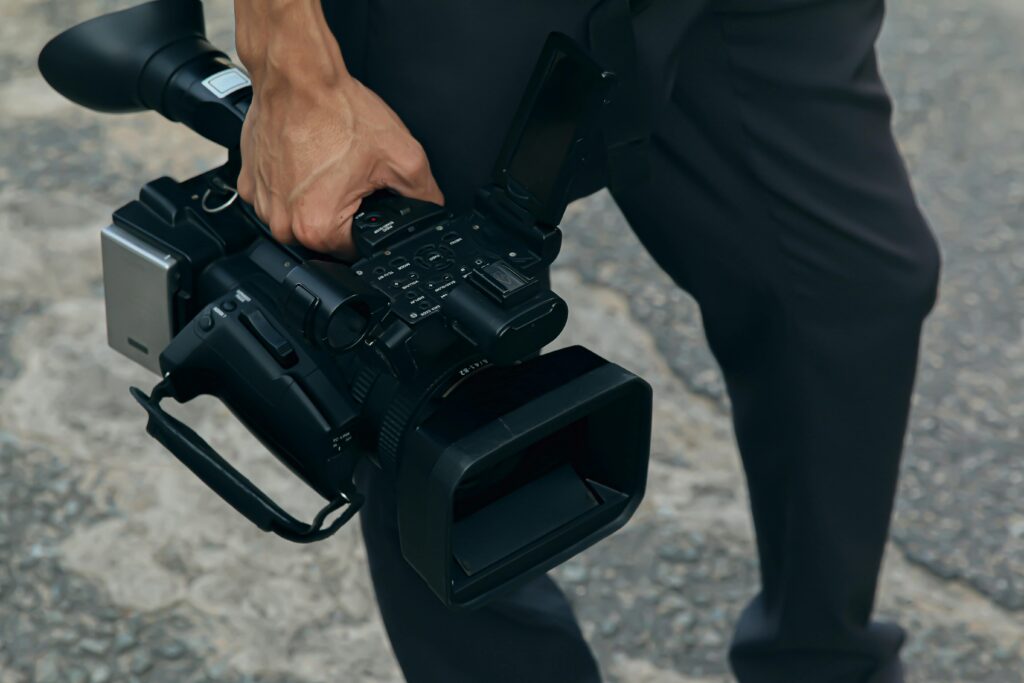
How to: Videography
How to: Videography
In the age of digital content and visual storytelling, videography has become an important skill for both individuals and professionals. Whether you’re a filmmaker, content creator, or someone just looking to capture memorable moments, understanding the basics of videography is crucial. This comprehensive guide aims to provide beginners with essential tips and techniques to get that perfect video.
Understanding Your Equipment:
Choosing the Right Camera
Select the camera that’s within your needs and that is within your budget. Some smartphones offer impressive video capabilities, and dedicated digital cameras or camcorders provide additional features and control.
Mastering Camera Settings
Familiarize yourself with basic camera settings such as aperture, shutter speed, and ISO. Understanding how these elements work will lead to well-captured, well exposed, and overall good video.
Visually Appealing Footage:
Stabilizing Techniques
Investing in a tripod or gimbal to device your shots. Smooth and steady footage is essential for professional looking videos. For handheld shots, practicing these shots with the three-point grip minimizes camera shake.
Composition of Framing:
Rule of Thirds
Use the rule of thirds to create visually balanced and engaging shots. Imagine your frame divided into thirds both horizontally perfectly. Position your main frame along these lines or other intersections.
Leading Lines
Use leading lines to guide the viewers out to your friend. Whether it’s a road, a fence, or architectural elements, leading lines adapt and draw attention to key elements in composition.
Understanding Shot Types
Experiment with various shot types, including wide shots for establishing context, medium shots for showcasing interactions, and close-ups for emphasizing details. Understanding shot types enhances storytelling capability.
Lighting Techniques:
Natural Light
Utilize natural light whenever possible. shoot during the golden hour for soft and warm tones. Be mindful of hard shadows, and use diffusion or reflecting controlled lighting conditions.
Artificial Lighting
Experiment with artificial lighting sources LED panels or soft boxes, so you can enhance your light and set up to learn about the three-point lighting for creating a well-lit and Visually appealing scene.
White Balance
Adjust your camera’s white balance settings to match the lighting conditions. This ensures accurate color representation and prevents undesirable Color cast in your footage.
audio considerations
Quality Microphone
Invest in a good quality microphone to capture clear and crisp audio. external microphones, such as lavender or shotgun mics, can significantly improve the overall production value of your videos.
Background Noise
Pay attention to the shooting environment and minimize background noise. Record audio separately if needed and use adding software to sync it with your video during post-production.
Narration and Voice Overs
Plan your audio narrative carefully. Whether you’re recording on site commentary or adding a voiceover and post-production, a while-scripted and well delivered audio check enhances the storytelling aspect of your video.
Post Production Editing
Choosing Editing Software
Explore video editing software options such that they’ll be Premiere Pro, Final Cut Pro, or free alternatives like DaVinci Resolve or Hit Film Express. They’re the basics of your chosen software to cut, arrange, and enhance footage.
Color Grading
Experiment with color gradients and hence the mood and visual appeal of your video. adjust brightness, contrast, saturation, and color balance would see the desired look
Adding Music and Transitions
Use music and transitions mindfully to enhance the flow and emotional impact of your video. Ensure that the background music compliments the overall tone and atmosphere you want to convey.
Conclusion
Mastering the field of videography is an exciting journey that evolves continuous learning and experimentation. By understanding your equipment, holding your composition skills, mastering various techniques, paying attention to audio, and developing and putting time into post-production work, you’ll be well on your way to create captivating, professional looking videos. Remember practice and creativity are key elements of becoming a skilled geographer.

Responses